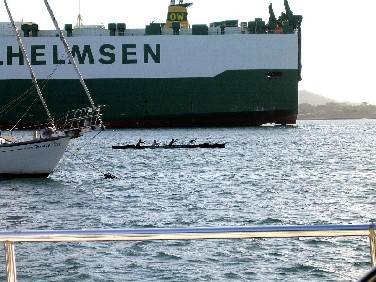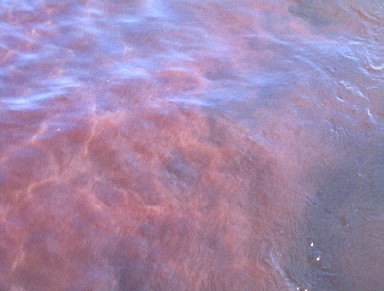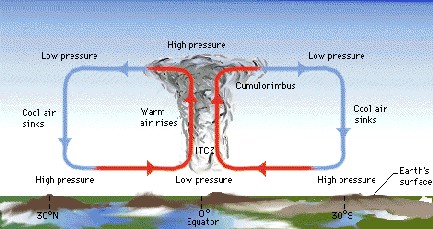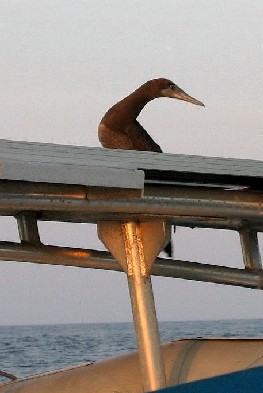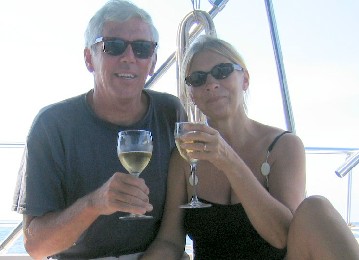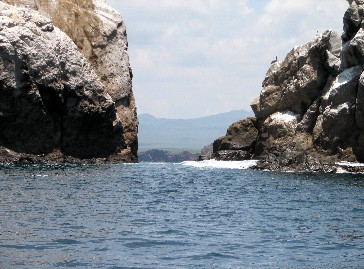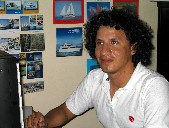|
| |||||||||||||||
| |||||||||||||||
|
26 March 2006
Galapagos Islands, Ecuador N 08.56.147 W 079.33.306
So Long Panama
One last reflection of Panama. Recently Panamanian newspapers have carried articles in which the US accused Panama of widespread corruption and facilitating drug traffic with its lax banking laws. Similar articles made headlines with the EU as the accuser. Well, I can't speak
Customs officers were always looking for overtime pay even when there was no OT or no need for OT. This petty bribery is exacerbated by the fact that you are suppose to check in and check out of every major port. The canal however is operated by a private contractor, ACP, and we found no improprieties there. We did all our own paperwork on the canal transit and subsequent check in and out and saved a couple hundred dollars or so we thought but we also had to endure several visits to the Port Captains' office to fill in forms and pay fees not to mention the taxi fares. So if you're coming to Panama and there is no reason you shouldn't, just be prepared. Each legal transaction is logged by hand into a journal and you must stop at three offices to check out not counting immigrations. $1.50 here, $8.20 there, $60.00 for a three month cruising permit (you must buy in three month blocks), $20.00 for the immigration officer, $20.00 for an immigration stamp. $10.00 for a tourist visa. $30.00 to extend your visa if you stay over 90 days. And you know it might not be that bad if at any of the places there was a computer in sight. Nope, bureaucrats peck away with two fingers and a lot of erasures, files are stacked shelf after shelf without any possibility of recalling any information. There is a most dour lady sitting at the Balboa yacht club that works for immigration and probably doesn't stamp more that four or five passports a day. And she is the only immigration person who did not demand a propina. Of course her desk was next to the dock master of Balboa who was an American.
We departed Balboa and staged our trip to the Galapagos Islands at the Perlas Islands some 30 miles off shore. Casual acquaintances gave the Perlas mixed reviews and current information told us that the local waters were fouled with red tide brought up by the Humboldt current. Having never seen red tide before we were for some reason surprised by how blood red the water appeared to be. Red tides are caused by billions of dinoflagellates (plankton) of various species which when dying off impart a reddish color to the water. The Red Sea is so named because of this phenomena. Such tides are sometimes dangerous, because they poison shellfish and fish and this can be passed to humans who might eat the toxic seafood. The Humboldt current which comes up from Antarctica also brought with it a drop in water temperature to just below 70 degrees. At this writing the temperature was up to 84, still too cold to enjoy but I donned a wet suit and cleaned the bottom of Shiraz while Rene cleaned the top. A full moon was on the rise so we decided not to investigate the islands further and stowed everything for departure.
ITCZ
Okay so what is this ITCZ or Intertropical Convergence Zone?
In the area from about 30° north of the equator to 30° south , the westward-moving trade winds prevail. Centuries ago these steady winds carried the sailing vessels of European traders, hence their name. Where the northern and southern trade winds meet near the equator they cancel each other out, creating the doldrums, a region of little or no wind more formally called the Intertropical Convergence Zone (ITCZ).
So here we are in the doldrums, establishing a new record for the slowes
After four days the winds freshened a bit and we are moving along at 5-7 knots. We fantasize about how to make the boat faster when it is hauled out in New Zealand. Do we remove the shoes on the keels, close some thru hulls, add larger sails, increase the height of the mast? But how many times are you going to take your boat across the ITCZ?
The waters in this area are rich with nutrients and at night before the moon comes up you can see a bioluminescent wake that is significantly larger and brighter then any we have experienced before. It almost appears that we have lights below the water line. This visual effect is created by the hull and running gear breaking up the plankton and as that happens phosphorus is released into the water. The area is commercially fished and we have seen several large trawlers with huge nets on the rear deck ready to be spread across miles of the sea. Although we have caught but one small tuna, we did have a bit of excitement one day when a six foot bill fish hit one of our new lures and it danced on top of the water three or four times before breaking our 30 pound test line. It was a ten dollar lure and a three dollar show.
Daily we check in with the Pan Pacific radio net at 9:00 a.m. on 8143mhz on the SSB radio . We also set up a radio schedule with the three other catamarans to call twice a day at a specific time to exchange location, etc. It is nice to know that there are people that know your location and it is also good to talk to someone along the way.
Cutting the Line
Shiraz and her crew crossed the equator on 20 March at 4:04 p.m. and made a simple sacrifice of champagne to Neptune, the god of the seas in Roman mythology. We also did all the normal cruiser things like take pictures of the GPS at latitude "0", flush the toilets to see if the water does indeed twirl the other way, and sat back to enjoy yet another milestone in our slackadventure. Although the rule on Shiraz is no alcoholic beverages while underway, we did make this one exception and had a glass of champagne to celebrate. Only 75 more miles to the Galapagos and 0 Kt of winds.
Arrival There are two ports of entry in the Galapagos. One is Wreck Bay in San Cristobal and the other is in Academy Bay in Santa Cruz. We chose Academy Bay since the agent that we had contacted was located there and the island provided more interesting sites and activities. It also houses the Darwin Research Station. The anchorage is a bit crowded and the swell creates a roll so it is advisable to utilize a stern anchor. While at the Perlas we contacted Johnny Romero, at nautigal@interacti and provided him with all the information he required to procure a cruising permit for Shiraz. We were not however able to supply h
Our first day ashore found an abundance of quaint bars and restaurants and numerous gift shops with handicraft items and a plethora of hats, T-shirts, bags, sandals, and other souvenirs.
Although you have read some complaining about the passage in the paragraphs above it was a very pleasant experience and was not difficult.. We enjoyed a nightly show put on by the galaxy and the seas were never over four feet. We averaged 110 miles per day which is slow but we had the opportunity to try every sail combination we could think of and we gained valuable downwind experience.
If you're headed that way:
|

